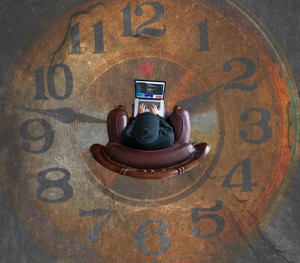Living with borderline personality disorder
May 20 2020

Odi et amo. Quare id faciam, fortasse requiris
Nescio, sed fieri sentio et excrucior
(Catullus, Poems, 85)
The poem above was written by Gaius Valerius Catullus, who died in approximately 54BC at the age of 30. I am by no means a classicist, and until two days ago I had never heard of the poem. As a huge fan of historical fiction, I am currently reading ‘Excalibur’ by Bernard Cornwall, and in the novel there is a conversation between one of King Arthur’s knights and a member of the nobility, in which they were discussing Arthur. In trying to explain the character’s motivation, the knight quoted a phrase in Latin: ‘Odi et amo. Excrucior’ explaining that it simply means ‘I love and I hate. It hurts’. To me, this simple phrase summed up so much of how I, as a person with borderline personality disorder (BPD), experience emotions, and I was drawn to read the whole poem. As it transpired, the poem consists only of these two lines, which can be translated as follows:
I hate and I love. Why I do this perhaps you ask
I do not know, but I sense that it happens and I am tormented
You may not be aware of this, but May is BPD Awareness Month, and so it seemed an appropriate time to reflect upon my own experience living with the disorder. BPD is a serious mental illness with the highest suicide rate of all mental disorders. Approximately 80% of people with BPD will attempt suicide at least once, and roughly 10% will die by suicide, a rate 50 times higher than the general population. Media representations are often negative or stigmatising, with film representations often showing people behaving erratically, causing harm to others or themselves. Arguably most well-known is Glenn Close’s character in ‘Fatal Attraction’, a character which gave rise to the term ‘bunny boiler' to describe a vengeful and emotionally unstable person, usually a woman. Indeed, when looking at films with characters displaying BPD traits, there is a recurring theme of dangerous and unstable women causing harm to others, such as Charlize Theron playing a serial killer in 2003’s ‘Monster’ and Uma Thurman’s unstable woman with superhero powers in ‘My Super Ex-Girlfriend’ in 2006.
Representations such as these, accompanied with a huge amount of misunderstanding and ignorance mean that many people with BPD report that there is a huge amount of stigma. Indeed, it is this stigma that can itself trigger episodes of BPD, as shown in a recent Scottish study. So why is there such a stigma, and such harmful misconceptions?
The most obvious reason is the symptoms themselves, and the impact they have upon people’s behaviour and relationships. As listed on the NHS website, BPD symptoms can be divided into four main areas:
- emotional instability – the psychological term for this is "affective dysregulation"
- disturbed patterns of thinking or perception – "cognitive distortions" or "perceptual distortions"
- impulsive behaviour
- intense but unstable relationships with others
When experiencing a BPD episode, especially when not receiving support or treatment, people with the disorder can experience sudden switches in mood, and experience emotions at an extremely heightened level. Put simply, one does not simply feel annoyance but instead feels pure unadulterated rage. A loved one saying they want to spend some time apart or to do a different activity than your choice is experienced as utter abandonment and even hatred. This can lead to extremely unstable relationships, and a huge emotional strain on those around you. It can be an unsympathetic illness, and people with BPD have historically have been accused of being incapable of love, manipulative or abusive. Another reason for the stigma is the term itself. Our personality is a key part of how we define ourselves, and to be told that our personality is ‘disordered’ can feel extremely personal, and that there is something inherently ‘wrong’ with who you are.
I was diagnosed with BPD in 2017 after many years of struggling with my moods, and engaging in behaviours that were damaging to myself and the people around me. This is something that I continue to struggle with, and unfortunately, I have continued to struggle with accessing treatment.
This is something that I am campaigning to address, and have been in contact with my local politicians to raise awareness. In the meantime, my efforts are focused on promoting my own self-care, becoming more aware about my emotional responses and trying to take steps to minimise the negative impact. This is an ongoing struggle, and I have by no means overcome the illness and gained a sense of control. However, by speaking openly about my experiences, I find that I can take some of the stigma away. I can put a real face onto a disorder that is associated with such damaging traits. Little by little, I hope to challenge some of the misconceptions and help my own recovery and that of others affected.
References
Borderline Personality Treatment, ‘Borderline Personality Disorder in the Movies’
Catullus, ‘I Hate and I Love’
Collins Dictionary, ‘Bunny Boiler’
Mental Health Today (2018) ‘BPD stigma is ‘most common’ crisis trigger’
NHS (2019) ‘Symptoms: Borderline Personality Disorder’
Sack, D. (2015) ‘The Destructive Power of Borderline Personality Disorder’
Smith, M. and Segal, J. (2019) ‘Borderline Personality Disorder (BPD)
Related
Popular
Upcoming event

Are you looking for an active challenge?
We have partnered with Run for Charity meaning we have access to over 500 different active challenges!

The Charlie Waller Trust
The Charlie Waller Trust is a registered charity in England and Wales 1109984. A company limited by guarantee. Registered company in England and Wales 5447902. Registered address: The Charlie Waller Trust, First Floor, 23 Kingfisher Court, Newbury, Berkshire, RG14 5SJ.
Copyright © 2024 The Charlie Waller Trust. All rights reserved.






